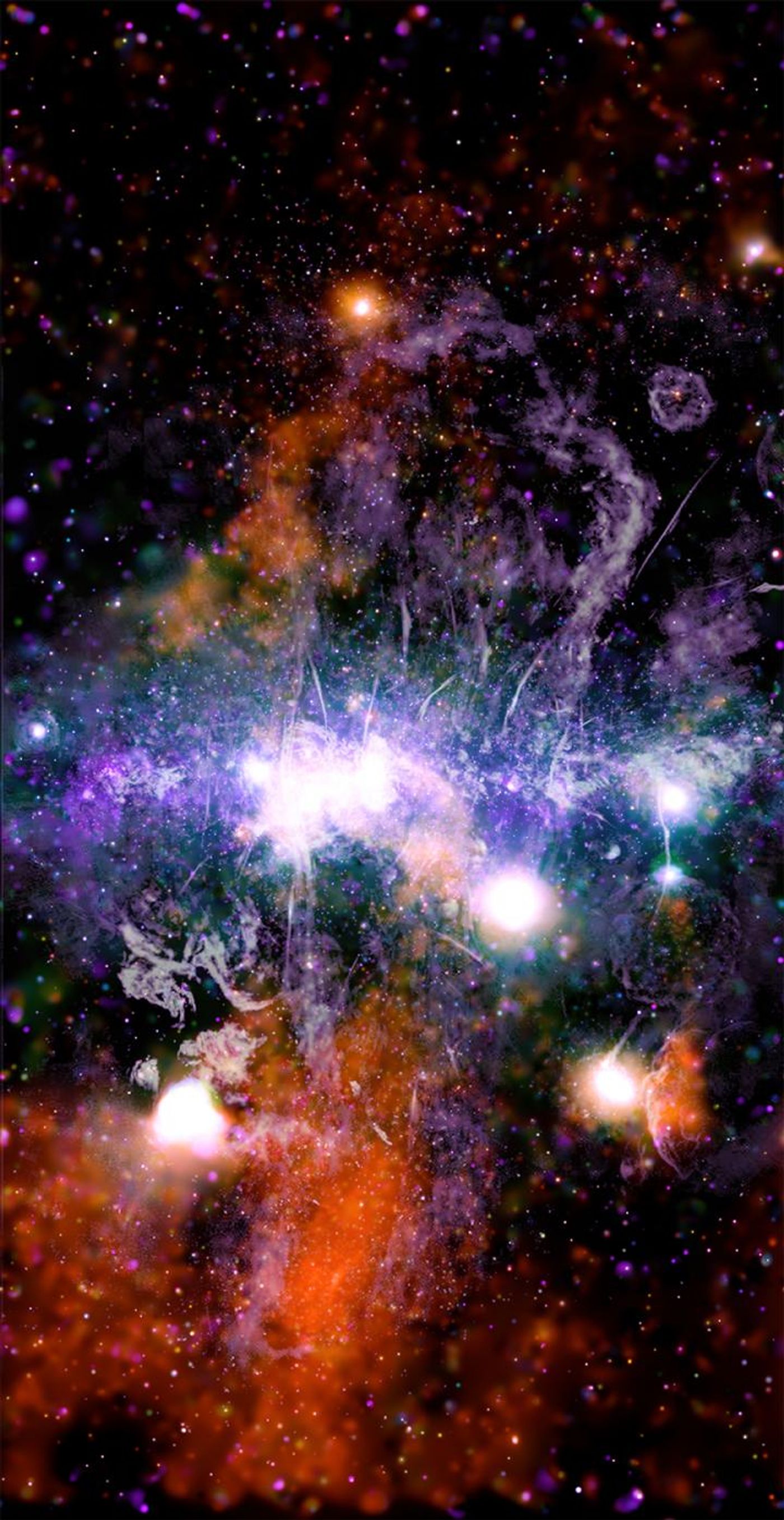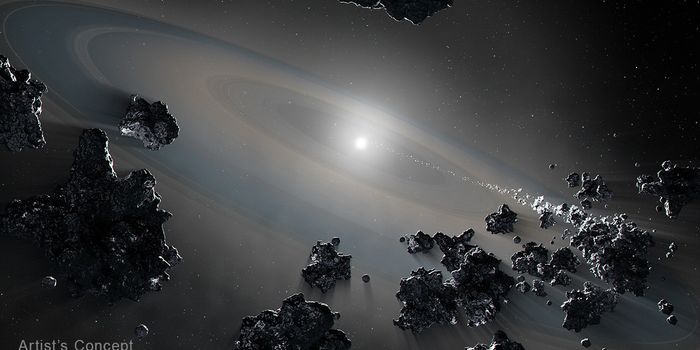Astronomers Get a Glimpse of the 'Violent' Center of Our Galaxy
There's a massive black hole at the center of our galaxy, but it's difficult for astronomers to see exactly what's happening there because it's obscured by dense clouds of gas and dust. But new research has revealed more about the wild phenomena at the Milky Way's center. This study of an X-ray thread called G0.17-0.41 was reported in the Monthly Notices of the Royal Astronomical Society. It may tell us more about how the Milky Way evolved.
"The galaxy is like an ecosystem," said study author Daniel Wang, an astronomer and professor in the department of astronomy at the University of Massachusetts Amherst. "We know the centers of galaxies are where the action is and play an enormous role in their evolution." Researchers just can't see the center, even with powerful instruments like the Hubble Space Telescope, explained Wang. But with NASA's Chandra X-Ray Observatory, a telescope that detects X-rays instead of capturing visible light, the obscuring fog surrounding the center of the galaxy can be penetrated. The results are amazing.
The massive black hole at the galaxy center emits plumes of X-rays that the telescope can detect, including the G0.17-0.41 X-ray thread, which was discovered near the southern plume.
"This thread reveals a new phenomenon," said Wang. "This is evidence of an ongoing magnetic field reconnection event." The thread might be "only the tip of the reconnection iceberg."
Magnetic field reconnection events are when opposing magnetic fields are forcefully combined together, and massive amounts of energy are released. "It's a violent process," said Wang. It's known to produce space weather and cause solar flares. Magnetic reconnection is now thought to happen in interstellar space, and seems to be where the X-ray plumes come out of the center of the galaxy.
We still have a lot more to learn, Wang noted. "What is the total amount of energy outflow at the center of the galaxy? How is it produced and transported? And how does it regulate the galactic ecosystem?" These are fundamental questions that are related to the history of the galaxy, said Wang.
Sources: AAAS/Eurekalert! via University of Massachusetts Amherst, Monthly Notices of the Royal Astronomical Society









